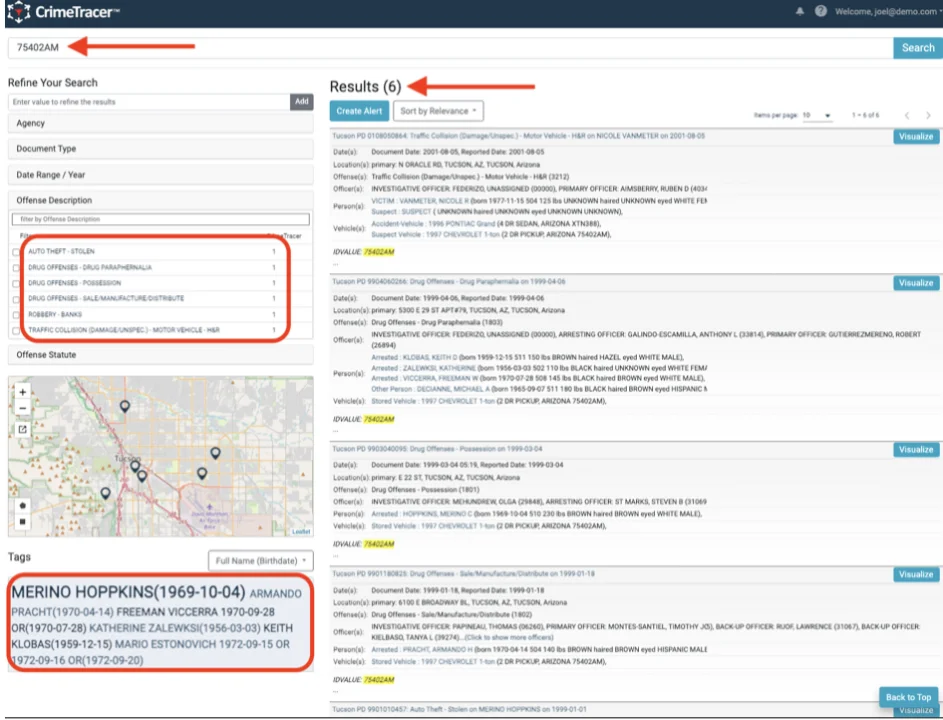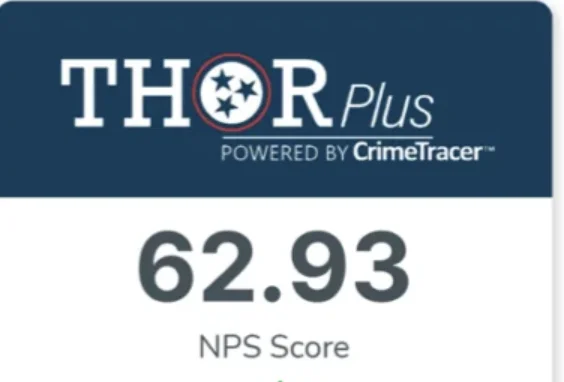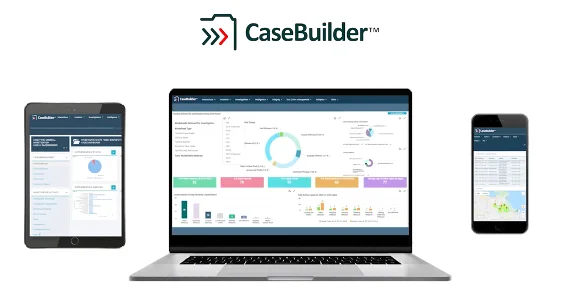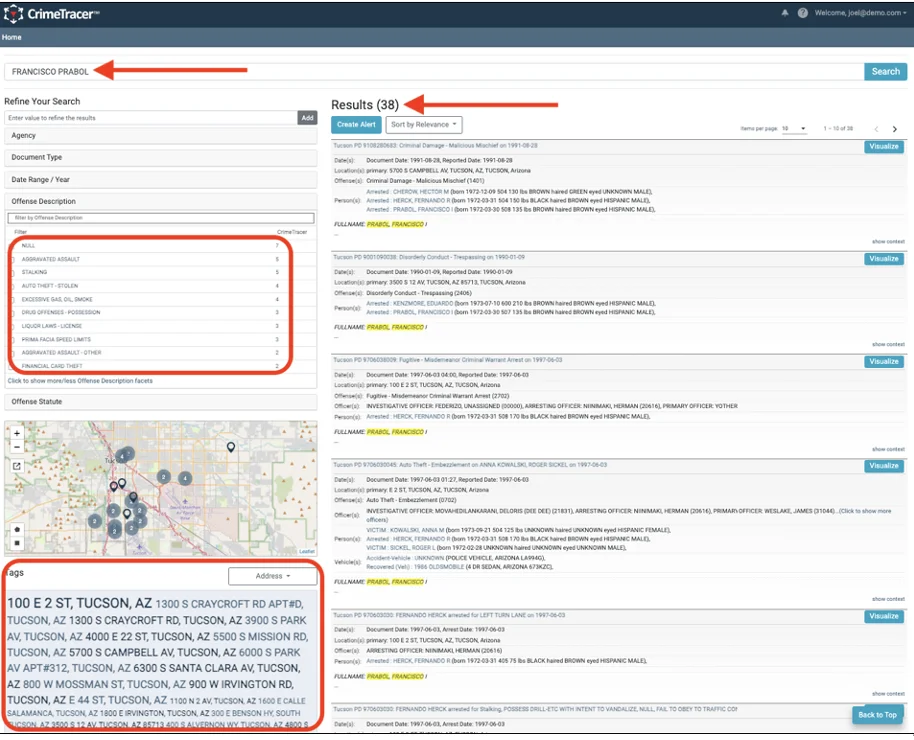In today’s law enforcement landscape of lean budgets and reduced staffing, force-multiplying technology plays an increasingly critical role. For public safety and law enforcement leaders focused on solving crimes and addressing public safety issues on a large-scale, systemic level, law enforcement data management systems like CrimeTracer can be critically important tools in the toolkit. Formerly known as COPLINK X, CrimeTracer provides access to more than a billion records from local law enforcement and nearby jurisdictions as well as from RMS, CAD, LPRs, LinX, (N-DEx), the Thomson Reuters CLEAR database of public records, and more. Investigators can search across all those records using natural language terms and concepts and generate charts of the connections among items searched (people, vehicles, etc.) as well as regional crime heat maps. While CrimeTracer is a huge boon to the individual officer, it’s even more effective when leveraged statewide or as part of a larger initiative. In this article, we’ll talk about the three key steps that leaders can take to ensure a successful CrimeTracer deployment at the agency and state levels.
1. Get Buy-In From the Top
A successful deployment is a top-down operation. That mandate can come from many places, but whether it’s a high-ranking officer from the state police, or a commissioner from the statewide security agency, the directive must come from an advocate with the authority to make sure all participating agencies comply with the new standard operating procedures.
For example, when COPLINK X was adopted over 20 years ago by the police department of a major southwestern city, command staff mandated that every search an officer performed had to involve COPLINK X (regardless of whether the officer used another system as well). That meant that the use of COPLINK X became the new standard—when making a traffic stop, for example, the officer was to run the license plate in COPLINK X to see what turned up. Because everyone was using it, this city found great value in CrimeTracer, and they’re still using the platform today.

With the power of information sharing, a larger-scale deployment of CrimeTracer streamlines protocol and expedites the ability for officers and investigators across a larger area to make connections and generate high-quality leads.
2. Identify Which Data Sources Your Agency Finds Valuable
The second key ingredient for a successful CrimeTracer deployment is good data. You must have good data to get good information and make informed decisions. At the beginning of your deployment, you want to identify the data sources that you value. In this capacity, SoundThinking acts as a trusted advisor and will meet with your agency to discuss the value propositions around each data source type, drawing on our extensive law enforcement experience to help you figure out what you need and what can be added. As mentioned before, the standard implementation of CrimeTracer comes with access to more than a billion law enforcement records—record management systems (RMS), computer-aided dispatch (CAD) systems, license plate readers (LPRs), ShotSpotter gunshot detection results, jail management systems (JMS), court warrant records, and the other data sources already mentioned. Every customer gets access to those. But in statewide employment, additional data sources can be added to meet an organization’s specific needs, and more and more data sources are becoming increasingly important. Useful data might be buried anywhere: arrest records, officer narratives, Word files and notes, and so on. Ultimately, CrimeTracer consolidates the data from all the different systems, giving you the most comprehensive and cohesive view of what’s going on in your jurisdiction.
With a statewide deployment of CrimeTracer, an investigator looking to identify potential associates of a known criminal might review data from the Bureau of Prisons to see who is frequently visiting the offender in prison, and from there, stitch that data with other data sources from across the state. Ultimately, recognizing the value of the data remains critically important.
A 10-second overview of CrimeTracer’s Quick Search feature.
3. Relentless Follow-Up
Once the decision is made to deploy CrimeTracer, it requires continued close attention to make sure implementation is proceeding as planned and that the investigators across your agency and/or at the state-wide level are getting the training and support that they need.
SoundThinking will follow up with those internal champions to help with the deployment, provide training and support as needed, and so on. The champions can ask questions as well as provide feedback to the vendor about improvements requested or, if possible, new data sources that might be added. That also helps grow adoption and use.
Law enforcement leaders need to designate or recruit these internal product champions as early as possible in the deployment process. And at the agency level, command staff should be prepared to follow up with the champions to make sure they’re getting what they need.
4. Share Information
Listed above are the three key steps in ensuring a successful statewide or agency-wide implementation of CrimeTracer. However, it’s worth mentioning that there is one more factor that can make a big difference: participation in an information-sharing program such as the Department of Homeland Security’s Law Enforcement Information Sharing (LEIS) Service. Such collaborative efforts give the various agencies a way to share results and discoveries, learn from the experiences of others, and serve as a valuable means of disseminating information across multiple agencies within your jurisdiction.
To better understand the power of information sharing at a nationwide level, look at Cobb County, Georgia. With CrimeTracer, the Cobb County PD has been able to link and/or identify suspects by getting data from other agencies across the country. For example, in 2019, Cobb County had a homicide with two suspects involved. They were able to apprehend one suspect shortly after the homicide occurred but were still looking for the driver and the vehicle. While going through the trial, investigators found a phone number potentially associated with the driver. Their office used CrimeTracer to look up that phone number and there was a report from Los Angeles attached – the suspect had made a report about the vehicle five days after the murder! The Cobb County PD was then able to apprehend the suspect and bring him back to Cobb County for the murder trial, where both suspects were found guilty.
Making CrimeTracer Work for You
A wide-scale CrimeTracer deployment—across an entire agency or department, or statewide—does more than simply put the product in the hands of all its individual members. Making it standard operating procedure across a broader network of quality data sources makes the tool a much stronger force multiplier than agencies using it in a silo.






